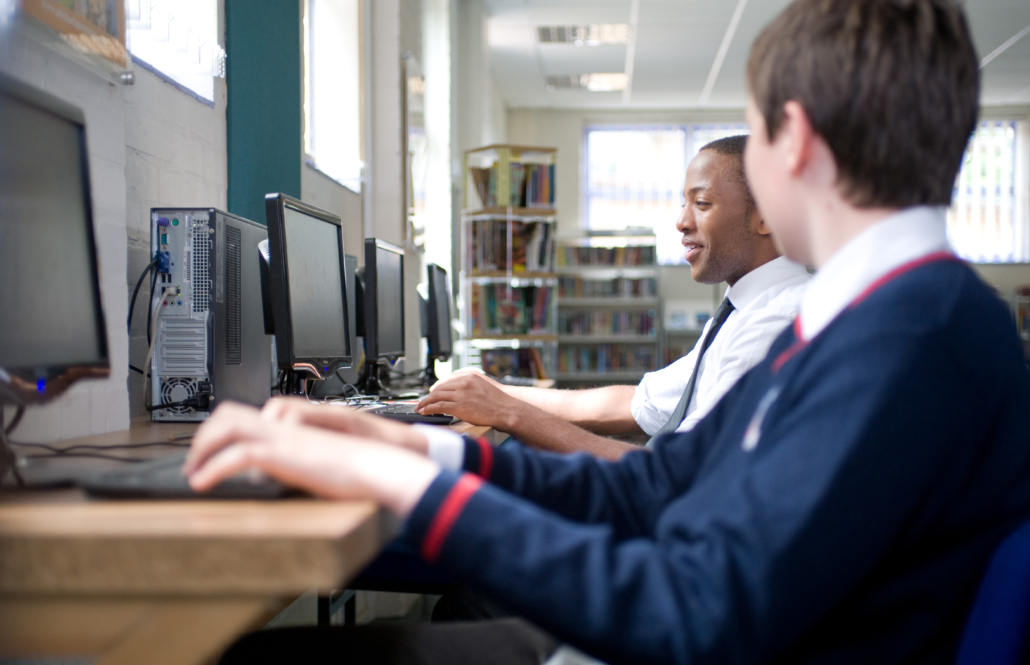

For many years, EdTech tools have served as learning supports. Far from mainstream, they were implemented for the few. They marked those few out from their peers, and learning how to use the tools was often an additional burden on already overloaded teachers.
Recently, however, we’ve seen a shift towards inclusion, and a greater understanding of individual approaches to learning, and as a result we are seeing these same tools flooding into classrooms, with positive results for students across the board.

The EdTech debate
Educators, policy-makers and parents have long debated the extent to which technology should be used in the classroom, and how it can be used most effectively.
But in the last five years, we have started to see compelling evidence that well-designed technology can make a significant difference to learners’ outcomes when deployed by teachers. The impact of technology is shown in increased independence, newly-motivated students, and many new ways of engagement.
It’s important to clarify, of course, that it is the synchronicity of tech and teacher time that will make an impact, rather than a heavy reliance on one or the other. Tech does not replace a good teacher, but it can hugely help them and their students to achieve their potential.
Technology in a crisis
2020, of course, has brought a rapid rise in technology-centred learning. We’ve embraced technology like never before – but this has brought a number of challenges, not least for SEND students.
These students can be particularly vulnerable as they cope with not being at school, with changes in their daily routine, with not seeing their friends or teachers, and with grasping new ways of working and accessing learning. Keeping the student connected to learning and to the school is critical for them at this time.
For the families of the 350,000 children aged 0-17 with a learning difference in the UK, the shift away from a traditional school setting, and the potential of more disruption to come, presents significant challenges, as many of these students rely on interventions, accommodations, and specialised instruction to support their diverse or specific learning needs. The recent school closures required schools and teachers to find new means of ensuring continuity of learning for SEN students while they are out of their normal school environment.
Because of all this and more, we have seen and heard much from concerned teachers and parents of SEN students during this period, and SEN provision has been mentioned often in public briefings and government statements. And what has become clear through it all is that as we plan our SEN strategies going forward, we must do so through a technology lens.
Indeed, guidance from the DfE during the period of remote learning focused heavily on ensuring SEN learners received equity of access to the new digital world. The guidance called on schools to “provide additional support tools to pupils who have barriers to engagement…including children with special educational needs and disabilities (SEND)”. It advised teachers that “educational activities should also be created in a range of formats, so that they are accessible to all”, and that they should “use a wide range of accessibility features. For example, voice-to-text and text-to-speech conversion, or different viewing formats to support pupils with dyslexia and other special educational needs. It is useful for teachers to research these features when planning and designing their teaching”.
The DfE’s curriculum guidance couldn’t be clearer: “Consideration will need to be given to how remote education approaches can be tailored to ensure the content is accessible to pupils with special educational needs and disabilities (SEND), including children who are in receipt of SEN support”.
It is clear that everything needs to be done to provide a level playing field, to ensure that students are engaged and that nobody is being left behind or feeling excluded.
Making informed choices
In every classroom, there will be children who learn in different ways and with contrasting educational needs. Tools aiming to enhance inclusive learning need to be designed to engage, encourage, and motivate all students, while offering extra support and features for those who need them. And with a vast array of tools available, which are often easy to implement, there are more opportunities now than ever before to make extra support available.
For example, imagine a technology which could help your students adapt the curriculum to suit their needs and make each learner feel supported, whilst adjusting to how they learn, when they learn and where they learn. This helps teachers to manage their heavy workload, while confident that their students have the help and support they need.
The power of EdTech
These are challenging times for both teachers and students, as schools plan strategies that ensure provision is in place for wherever we’ll be teaching and learning going forward. In this we must ensure that our SEN students are not disadvantaged. Accessibility for these students will ensure accessibility and equity of access for all students.
For most, this is uncharted and unprecedented territory. However, EdTech tools can provide the means for building a tech-enabled ‘at-home’ strategy which will keep students engaged and supported without hindering their learning.
In the short term, teachers will build on what they have learned so far. The importance of workflow with tools like Google Classroom and Microsoft Teams. The need for constant communication. The importance of formative assessment and quality feedback and the balance of the amount and frequency of work assigned to students.
And as tech advances, digital tools grow in efficacy and can clearly be shown to positively impact not just SEN learners, but all children as they learn and express themselves in their own individual ways.
We don’t know what the next year holds, but we do know that inclusion for all students is a priority for policy makers and educators, and as teacher workloads continue to increase, EdTech has a vital role to play in delivering that. Remote learning can be lonely and disengaging for the student, and the importance of communication, feedback, and assessment has never been more important. There are incredibly powerful technology tools available to support these areas, and coupled with enhanced provision, we can give ALL students their best chances at success.